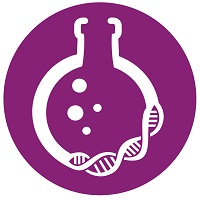Bioanalytics
Symposium: AI/ML in Bioanalysis
Regulatory-Ready AI: Applying Large Language Models to Bioanalytical Workflows
Monday, November 10, 2025
10:00 AM - 10:30 AM CT
Location: 221 CD

Stephanie A. Pasas-Farmer, PhD (she/her/hers)
President and Founder
BioData Solutions LLC
Lawrence, Kansas
Speaker(s)
The integration of large language models (LLMs) such as ChatGPT, BioResearcher, and AI Co-Scientist into bioanalysis is transforming how pharmaceutical and biotech industries approach method development, method validation, sample analysis, and regulatory compliance.
Large Language Models (LLMs) are being deployed in regulated environments to support literature reviews, summarize high-resolution mass spectrometry (HRMS) data, assist in modeling hybrid assays, and prepare regulatory documents aligned with ICH M10, FDA, MHRA, and EMEA requirements.
This presentation will explore how LLMs are advancing bioanalysis by optimizing assay parameters, enhancing method validation, and improving decision-making in pharmacokinetic/pharmacodynamic (PK/PD) studies. Through a case study, we will demonstrate how an LLM-powered application can flag non-compliant data and summarize critical report findings to significantly enhance efficiency, consistency, and compliance.
However, as AI tools gain traction, the risk of hallucinations—fabricated or misleading outputs—poses significant challenges. In the context of regulated bioanalysis, hallucinated information can jeopardize data integrity, mislead stakeholders, and threaten regulatory approval paths like 510(k), PMA, and IVDR. We will discuss how these risks affect compliance, particularly with documentation supporting method development and validation efforts, and how AI outputs should be auditable, explainable, and reproducible.
A critical challenge in applying LLMs in regulated bioanalytical settings is ensuring robust validation. Unlike traditional software, LLMs generate dynamic outputs that can vary based on context, requiring a novel validation approach. We will discuss strategies for validating LLMs for intended use, including establishing performance metrics, bounding output behaviors, implementing audit trails, and ensuring model version control. Furthermore, we will address how FDA’s Proposed AI/ML Guidance (Jan 2025) begins to outline expectations for Good Machine Learning Practices (GMLP), software change control, and transparency, yet lacks specifics on validating generative AI like LLMs.
We will further explore how current regulatory frameworks, including the FDA’s Proposed AI/ML Guidance (January 2025), attempt to manage these risks while promoting innovation. Although the guidance outlines Good Machine Learning Practices (GMLP), performance monitoring, and software lifecycle transparency, gaps remain—especially in addressing the dynamic nature of LLMs and managing hallucinations in regulated submissions.
Finally, this talk proposes a model for proactive collaboration between industry and regulatory bodies to co-develop a future-ready bioanalytical framework. Emphasis will be placed on fostering transparency, risk-based validation, and harmonization across global regulations—ultimately enabling the adoption of AI/ML tools that are both innovative and compliant.
Join us to gain insights, see real-world examples, and explore how to safely and effectively leverage LLMs in the next generation of bioanalysis.
Large Language Models (LLMs) are being deployed in regulated environments to support literature reviews, summarize high-resolution mass spectrometry (HRMS) data, assist in modeling hybrid assays, and prepare regulatory documents aligned with ICH M10, FDA, MHRA, and EMEA requirements.
This presentation will explore how LLMs are advancing bioanalysis by optimizing assay parameters, enhancing method validation, and improving decision-making in pharmacokinetic/pharmacodynamic (PK/PD) studies. Through a case study, we will demonstrate how an LLM-powered application can flag non-compliant data and summarize critical report findings to significantly enhance efficiency, consistency, and compliance.
However, as AI tools gain traction, the risk of hallucinations—fabricated or misleading outputs—poses significant challenges. In the context of regulated bioanalysis, hallucinated information can jeopardize data integrity, mislead stakeholders, and threaten regulatory approval paths like 510(k), PMA, and IVDR. We will discuss how these risks affect compliance, particularly with documentation supporting method development and validation efforts, and how AI outputs should be auditable, explainable, and reproducible.
A critical challenge in applying LLMs in regulated bioanalytical settings is ensuring robust validation. Unlike traditional software, LLMs generate dynamic outputs that can vary based on context, requiring a novel validation approach. We will discuss strategies for validating LLMs for intended use, including establishing performance metrics, bounding output behaviors, implementing audit trails, and ensuring model version control. Furthermore, we will address how FDA’s Proposed AI/ML Guidance (Jan 2025) begins to outline expectations for Good Machine Learning Practices (GMLP), software change control, and transparency, yet lacks specifics on validating generative AI like LLMs.
We will further explore how current regulatory frameworks, including the FDA’s Proposed AI/ML Guidance (January 2025), attempt to manage these risks while promoting innovation. Although the guidance outlines Good Machine Learning Practices (GMLP), performance monitoring, and software lifecycle transparency, gaps remain—especially in addressing the dynamic nature of LLMs and managing hallucinations in regulated submissions.
Finally, this talk proposes a model for proactive collaboration between industry and regulatory bodies to co-develop a future-ready bioanalytical framework. Emphasis will be placed on fostering transparency, risk-based validation, and harmonization across global regulations—ultimately enabling the adoption of AI/ML tools that are both innovative and compliant.
Join us to gain insights, see real-world examples, and explore how to safely and effectively leverage LLMs in the next generation of bioanalysis.
Learning Objectives:
- Role of LLMs in regulated bioanalysis: Learn how LLMs support bioanalysis through report and document generation, data review and analysis, and regulatory submissions.
- Risks pertaining to hallucinations with LLM use: Hallucinations in LLMs can impact documentation integrity, and therefore require strategies for ensuring auditable, reproducible, and compliant outputs in regulatory submissions.
- Validating LLMs in bioanalytical workflows: Adapt appropriate validation frameworks for LLMs in light of new technologies, new applications and evolving regulatory landscape, including FDA’s Proposed AI/ML Guidance (January 2025).

